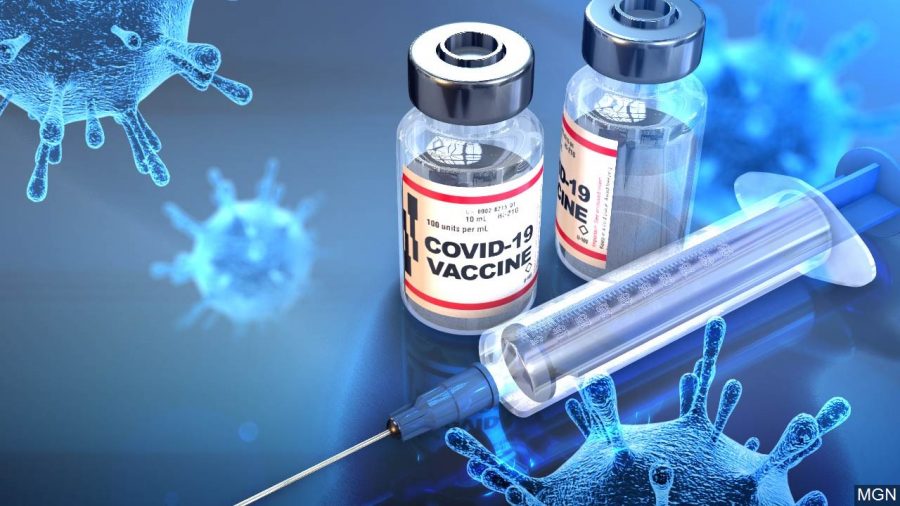The Coronavirus Vaccine Develops
March 3, 2021
As it nears more than a year since the virus emerged, a large number of people are still vulnerable. These social distancing and extreme restrictions are currently the only barriers to super-spreading. It has become clear that a more efficient and reliable way, like a vaccine, must develop in order to finally eradicate COVID-19. Many large health companies have been involved in the race to develop a vaccine to combat the virus. Currently, three companies have developed vaccine front runners: Pfizer/BioNTech, Moderna, and Oxford/AstraZeneca.
Pfizer and Moderna’s vaccines are primarily those of RNA, which involves injecting a minuscule fragment of the virus’ genetic material into the body. This results in the human body itself producing part of the coronavirus. The small “nudge” drives the body to stimulate the immune system, thereby producing a vaccine defense.
Similarly, AstraZeneca’s vaccine employs a harmless virus to carry the same genetic material in the body. Though it appears simple enough, there is suspicion concerning the short amount of time spent to develop AstraZeneca’s vaccine. Instead of taking almost ten years, the company resulted in a vaccination in ten months, which they claimed was highly effective. AstraZeneca states that they had been prepared for developing a vaccine since previous outbreaks such as SARS and Ebola; they also discovered a critical piece of biotechnology— the engineered cold virus of a chimpanzee. By engineering a virus that infected chimpanzees, the company was able to develop the foundation of defense against almost anything. When they were informed of the COVID-19 outbreaks, the company found themselves ready.
Apart from developing the virus itself, the companies are also responsible for testing their creations. According to the University Of Maryland Medical System, vaccines are tested extensively amongst thousands of people before being registered for use. The first phase involves testing on a few dozen healthy adult volunteers, to establish that the vaccine actually produces an immune response. Phase two is when the vaccine is tested on specific groups of people and confirms any side effects. The third phase involves an even larger group of individuals— this also involves selecting specific “control” groups within the population. Finally, after the FDA approves the vaccination, manufacturing begins.
The large numbers of people getting vaccinated has contributed to a decline in the number of cases throughout the United States. While the distribution of vaccines is far from over, there is hope that normalcy will arrive later in the year.

